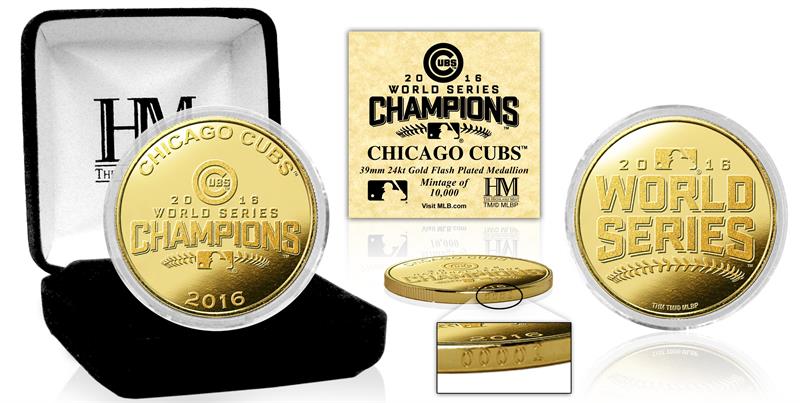May 29, 2018 | coins, dollar, history, US Mint

Randy’l Teton interview on East Idaho Newsmakers (screen grab)
Since there are no known images of Sacagawea, Goodacre searched for someone she could model her design on. Goodacre found Randy’L He-Dow Teton is a member of the Shoshone-Cree tribe to be the model. Teton was a student at the University of New Mexico majoring in art history and was working for the Institute of American Indian Arts Museum in Santa Fe when Goodacre visited looking for information about the Shoshone tribe. While talking with the museum’s curator, Goodacre was shown a picture of the curator’s daughter, Randy’L, and decided to work with her to create the Sacagawea design.
Recently, Teton sat with Nate Eaton of EastIdahoNews.com for his series East Idaho Newsmakers. Although they cover other topics, most of the video is about Teton’s experience as being the model for Sacagawea.
EastIdahoNews.com does not provide the ability to embed the video elsewhere on the web. To watch the video and hear the story from Teton’s point of view you can visit the site: Newsmakers: The fascinating story of how this local woman ended up on the dollar gold coin.
Mar 23, 2018 | BEP, currency, history
As part of the Bureau of Engraving and Printing’s celebration of Women’s History Month, they posted the following image on Facebook (copied here for those who do not use Facebook):

More than 150 years ago, four-subject sheets of Demand Notes, printed by a private firm, were delivered to the Treasury Department where they were individually signed by clerks, and trimmed and separated with scissors by women.
I thought it was a cool picture and wanted to make sure it is shared in the community!
Image courtey of the Bureau of Engraving and Printing.
Jan 26, 2018 | currency, foreign, history
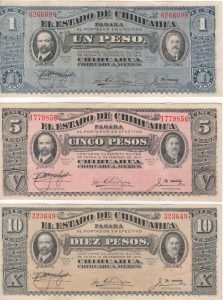 This past week, I was looking into a box I purchased from an estate and I found a plastic bag of old foreign currency. When I removed the notes, I found common notes that can usually be purchased from estate especially since he was a career military officer. There was everything from German Notgeld to several European and Asian countries.
This past week, I was looking into a box I purchased from an estate and I found a plastic bag of old foreign currency. When I removed the notes, I found common notes that can usually be purchased from estate especially since he was a career military officer. There was everything from German Notgeld to several European and Asian countries.
During my search, I found three notes that were intriguing. All three notes were from El Estado de Chihuahua, the State of Chihuahua. They were beautifully preserved (albeit with a fold down the center) one-, five-, and ten-peso notes with the same design but in different colors.
Under the printed denomination are the words “Conforme al Decreto Militar de Fecha Io de Febrero de 1914” (Pursuant to the Military Decree dated February 1914). I vaguely remember that was the era of Pancho Villa and his romp through the southwest United States. Time to refresh my history.
After the 35-yearlong regime of Porfirio Diaz, he was challenged in the presidential election by Francisco I Madero in 1910. Madero was in favor of reform and social justice. But Diaz fixed the election declaring he won by a landslide.
Before the election Diaz had Madero jailed and when it became obvious the election was fixed, Madero supporter Toribio Ortega formed a militia in Chihuahua to oust Diaz.
While in jail, Madero issued a “letter from jail” that declared the Diaz presidency illegal and called for a revolt against Diaz. The revolt began in November 1910. Diaz was ousted and a new election was held in October 1911 that elected Madero the 33rd President of Mexico.
Mexico was divided into districts managed by different governments and protected by rebel leaders including Pascual Orozco, Pancho Villa, and Emiliano Zapata. Eventually, they turned on Madero and assassinated him on February 13, 1913.
The United States first played a role in 1914 when Pancho Villa plundered parts of New Mexico. In 1916, Gen John J. Pershing was sent to Mexico to capture Villa but could not do so since Villa was hiding in the mountains of northern Mexico. Pershing was able to get some of the fighting to stop and, along with the Catholic Church and several affiliated political parties, forced the negotiation of the Constitution of 1917.
Although the notes were authorized in February 1914, the Chihuahua government did not have the ability to print notes. Eventually, they contracted with the American Banknote Company to produce the notes. They were issued in 1915.
To expedite production, all notes feature the same design engraved with different denominations and printed using different colored inks. Many of the elements used were standard to American Banknote’s catalog, for these notes, the portrait on the left is of Francisco I. Madero and the portrait on the right is Governor Abraham Gonzalez. Each features three signatures of the Tesorero General (General Treasury), Gobernator (Governor), and Interventor (Controller). As with many signatures, it is difficult to interpret their names from the handwriting. Please contact me if you have more information.
-
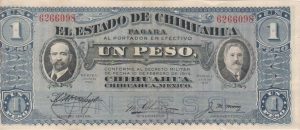
-
Chihuahua Revolutionary 1 Peso Banknote. 1915 Series L (SCWPM #PS530e)
-
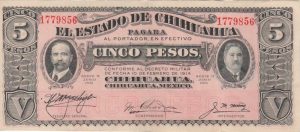
-
Chihuahua Revolutionary 5 Pesos Banknote. 1915 Series N (SCWPM #PS532e)
-
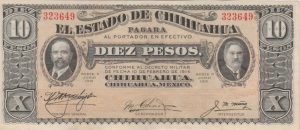
-
Chihuahua Revolutionary 10 Pesos Banknote. 1915 Series N (SCWPM #PS535a)
Reverse if these notes feature a framed picture of the Palacio de Gobierno do Chihuahua (Government Palace of Chihuahua) held by two griffins. When the notes were issued from the banks in Chihuahua, they received a red stamp from Tesorero General del Estado Chihuahua (General Treasury of the State of Chihuahua) along with the stamped initials of the issuing teller. When the notes were issued, the teller was supposed to stamp the date on the reverse but that was not universally practiced.
-
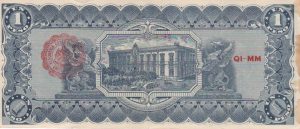
-
Chihuahua Revolutionary 1 Peso Banknote. 1915 Series L (SCWPM #PS530e)
-

-
Chihuahua Revolutionary 5 Pesos Banknote. 1915 Series N (SCWPM #PS532e)
-

-
Chihuahua Revolutionary 10 Pesos Banknote. 1915 Series N (SCWPM #PS535a)
In addition to the one-, five-, and ten-peso notes, the Chihuahua government issued 20- and 50-peso notes as well as a 50-centavos fractional note. Both the 20- and 50-peso notes featured the same design except the 20-peso note was printed using brown ink and the 50-peso was printed with a bright green on the front and a golden yellow on the reverse.
The 50-centavo fractional note used a different design and was smaller than the pesos. It was also printed by the American Banknote Company.
These notes were demonetized in 1917 with the signing of the new constitution.
An Educational Opportunity
Money is history in your hands. Look at what can be learned from finding three banknotes and exploring their past and how they fit into history.
Here is an idea for history teachers: you can go to any coin show and find a dealer with a junk box of foreign currency—find more than one if you can to increase the variety. Pick through the box and try to find as many different pieces of currency you can. Try to find a mix of countries, regions, and dates. You can also consider the same country but from different eras of rulers, who always wanted to see their portrait on their country’s money.
Before going to class, place each note in an envelope and place the envelope in a bag. Either pass the bag around the room or have each student come up and pick one envelope. After they pick their currency note, have them write an essay about the note and what the note represents. Have the students look up the history and put it in context of when the note was issued.
Rather than picking a topic, it is a fun way to have the students select a topic and make history come to life. The decisions as to whether the students get to keep the currency are up to you. Maybe you can talk to a local shop or club to see if they would be willing to donate the currency and come in to talk about currency collecting.
Nov 23, 2017 | administrative, history
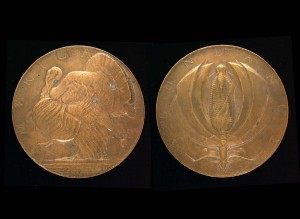
American Abundance designed by Albert Laessle and issued in 1934
As part of his attempt to maintain the union, President Abraham Lincoln issued a proclamation that made Thanksgiving Day a national holiday in 1863.
After Lincoln’s proclamation, it was traditional to celebrate Thanksgiving on the last Thursday of November. In a move to increase the holiday shopping period to promote more spending, President Franklin D. Roosevelt pushed to have congress pass a law to move Thanksgiving earlier in the month. In December 1941, Roosevelt signed a bill that set Thanksgiving as the fourth Thursday in November.
Be thankful for your life.
Be thankful for your family.
Be thankful for our hobby.
Be thankful for everything.
Happy Thanksgiving!
May 19, 2017 | books, coins, history
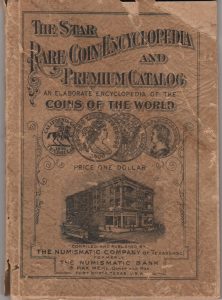 The shameless promotion of the coin business and extraordinary search for special rare coins did not begin with the explosion of the Internet. It can be traced to legendary coin dealer B. Max Mehl. From the empire he built in Austin, Texas, Mehl was probably the first coin dealer to market coins to the general public.
The shameless promotion of the coin business and extraordinary search for special rare coins did not begin with the explosion of the Internet. It can be traced to legendary coin dealer B. Max Mehl. From the empire he built in Austin, Texas, Mehl was probably the first coin dealer to market coins to the general public.
Mehl started advertising in The Numismatist in 1903 and in the following year issued his first catalog. In 1906, Mehl paid $12.50 to advertise in Collier’s magazine offering his Star Coin Book for 10-cents. Later, Mehl would expand the book and sell it for $1.
Benjamin Maximillian Mehl was born in Łódź, Russia (now Poland) in 1884. His family immigrated to the United States in 1895 and worked as a shoe salesman before he became a coin dealer. Stories about his relentless promotion report that he was shipping coins to more than 30,000 times a year.
Mehl is famous for his advertising that he “Will pay $50 for a nickel of 1913 with Liberty Head, not Buffalo.” Although he never found one, that did not stop him from advertising and trying.
Then there is the catalog, Star Coin Book. Before the Red Book, Blue Book, and Standard Catalog, there were few books that provided this amount of information and was affordable to the general public. The Star Coin Book was his marketing tool to make and keep people interested and to keep the orders coming in.
Mehl sold so many catalogs that one can be purchased for as little as $5.00 or as high as $50.00 depending on the year and condition. Many are in poor condition since they were not meant to be saved. Mehl wanted people to buy a new catalog every year.
Imagine my surprise when I was going through a box of odd books that I purchased from an estate and found a 1925 edition of The Star Rare Coin Encyclopedia and Premium Catalog. I picked up the book, paused as I tried to focus on the well-worn cover, and smiled as I realized what I had found.
The book is not in good condition but it is part of numismatic lore. It is Mehl’s work as a cataloger and seller of coins and some currency. It is page after page of coins and the values that he would pay if you wanted to sell your coins. These values are a range of what he would pay and he notes that is based on the condition of the coin. He does include a description of the differences in condition and most coin types include some type of picture, whether it is a photographic plate or a line drawing.
After the lists there are a few pages of history of coins, “Coins Past and Present” that is followed by coins he has for sale. All sales were done by phone or by postal mail. Remember, this was long before fax machines and the Internet!
There are both contemporary and modern writings about Mehl that describe him as a huckster and mendacious. Others describe him as a genius of marketing that helped grow the hobby. Regardless, Mehl has a place is numismatic history that has to be respected for being able to use the tools he had to build a successful business.

Mehl built his company’s offices at 1204 Magnolia Ave. in Fort Worth. The building was rescued long after Mehl had died but his name still appears over the main entrance.
Image of 1204 Magnolia Avenue take from Google Maps.
May 14, 2017 | commemorative, currency, history, notaphily
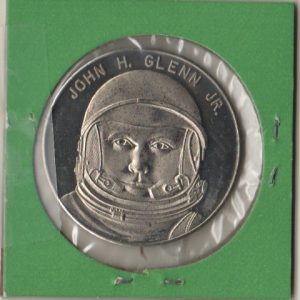 John Herschel Glenn, Jr. is a true American Hero.
John Herschel Glenn, Jr. is a true American Hero.
I feel so comfortable saying this that I will not qualify that statement with, “few will argue that ….” When you are the first American to strap yourself into a tiny capsule that is forced into space on top of the Atlas LV-3B rocket, essentially a huge Roman candle, there is no argument on his status in history.
Glenn was not only the first American in space but is also the oldest person ever to go to space. In 1998, at the age of 77, Glenn rode on Discovery on STS-95 as part of a study by the National Institute of Aging. Although the study was not criticized, the selection of Glenn was. While there will be an asterisk in history about the criticism, it will not diminish Glenn’s place in history.
While out looking for collectible inventory, I came across an auction of memorabilia from the widow of a crewman that was aboard the ship that picked up Glenn after he splashed down in the Atlantic Ocean.
On February 20, 1962, Glenn blasted off from Cape Canaveral on Friendship 7 for what ended up being a 4-hour 55-minute flight into history. During the flight, a sensor noted that a heat shield had loosened and could endanger his re-entry. Glenn was ordered to leave a solid-fueled retrorocket pack in place to protect the shield.
-

-
Parade in Florida on February 24, 1962 following the return of John Glenn.
-

-
John Glenn and General McElroy
Although Glenn’s re-entry was calculated, he carried a note that read, “I am a stranger. I come in peace. Take me to your leader and there will be a massive reward for you in eternity” in several languages, in case he splashed down in an area where the Navy was not positioned.
According to the auction house, two ships were in position based on the projections as to where Friendship 7 was supposed to splash down in the Atlantic. A third was positioned further south and then moved when calculations suggested that the retrorocket pack would change the trajectory of the capsule. When Friendship 7 splashed down further south than expected there was a race amongst the three ships to see who could pick up Glenn and etch their names into history.
The third and most southern positioned ship, the U.S.S. Randolph (CV-15), was in the best position to recover Glenn and the capsule. In the race to the area of the capsule, the Randolph arrived first and pulled Glenn out of the Atlantic. Glenn remained aboard the Randolph where he was medically examined before the aircraft carrier docked in Florida on Friday, February 23, 1962.
Saturday was shore leave for the crew of the Randolph in Key West, Florida. To celebrate, Captain Claude C. (Buddy) Inskeep and select members of his crew were invited for a pleasure cruise aboard The Big Wheel fishing boat where a number of pictures and autographs were offered.
-
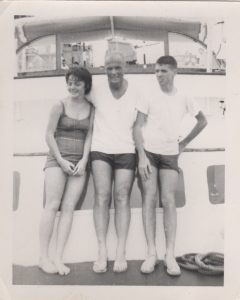
-
February 24, 1962 picture (L-R): Lyn Glenn, John Glenn, and Dave Glenn aboard The Big Wheel
-
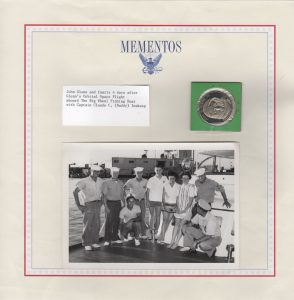
-
Memento given to the crew who visited John Glenn and family aboard The Big Wheel
In the auction lot of memorabilia were pictures of John Glenn and his family, a memento picture of some of the people on board The Big Wheel along with a medal featuring John Glenn, and an autographed $1 silver certificate.
It is the silver certificate that makes this lot a very cool find. Technically, we could call this a short snorter since it is a signed piece of paper currency of members together on a trip. But these are not ordinary autographs. From top to bottom the autographs include John Glenn’s wife Annie Glenn; John H. Glenn, Jr.; (John David) Dave Glenn (son, then 17 years old); and (Carolyn Ann) Lyn Glen (daughter, then 15 years old). Below the printed signature of Treasurer Ivy Baker Priest is written “2-24-62.”
I have no doubt that the autographs and the memorabilia are authentic. It is something that you just cannot find every day! Even though I am a dealer and should sell what I purchase, I know that this is a memento from history and of a hero who passed last year. I know I can make a hefty profit from this purchase since I know I vastly underpaid what it is worth, but I am having a hard time considering letting them go.
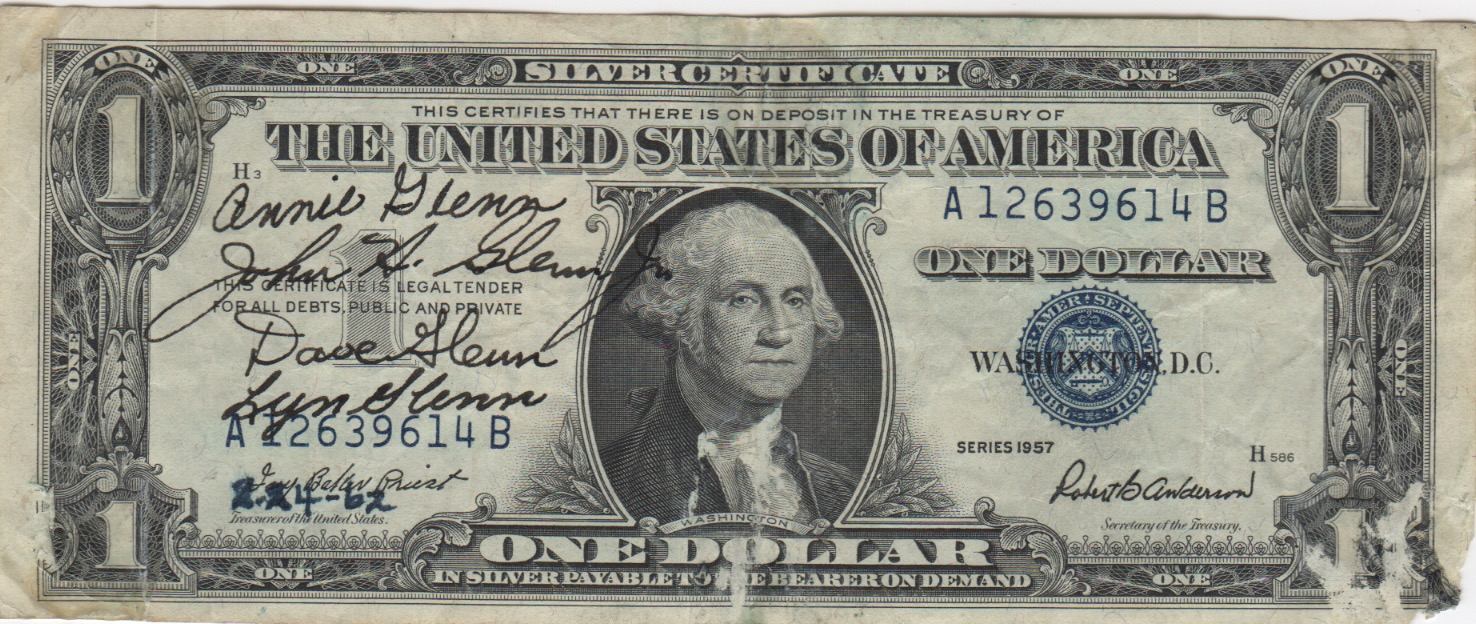
Glenn family autographed “Short Snorter” dated February 24, 1962, four days after Glenn orbited the earth in Friendship 7
For now, I own them but might entertain offers. But the offers must knock my socks off because this is just too cool to consider anything else!
-
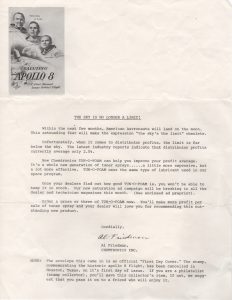
-
Letter found in the auction lot with the Glenn memorabilia
-
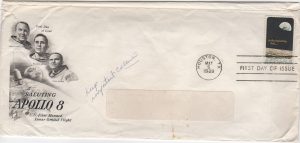
-
The First Day Cover (address redacted) that held the letter from Chemtronics, Inc.
Feb 25, 2017 | BEP, books, Canada, counterfeit, history
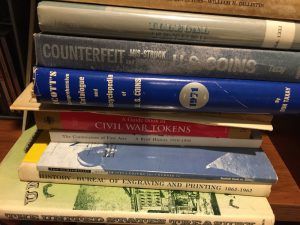 An adage of numismatics is “Buy the book before the coin.” It was first used by numismatist and dealer Aaron Feldman in an advertisement that appeared in the March 1966 issue of The Numismatist. Aside from being used to sell books, this sound advice tells collectors to enhance their knowledge of the hobby.
An adage of numismatics is “Buy the book before the coin.” It was first used by numismatist and dealer Aaron Feldman in an advertisement that appeared in the March 1966 issue of The Numismatist. Aside from being used to sell books, this sound advice tells collectors to enhance their knowledge of the hobby.
Education is important because helps build the skills and tools they need to navigate the world. Education helps us read, write, calculate and communicate. Without education, we would not be able to perform our jobs competently, accurately and safely. Education also gives us a view of the world which we live and provides a context to how we arrived at society today.
Numismatic education is important because it teaches us how to understand the and navigate the world of money and the economics that made it necessary. Without numismatic education coins, currency, bonds, tokens, and medals are just objects to be ogled without context. We would not know why these items are important or how to collect them. Numismatic education not only teaches us about how to identify these items and collect them but provides the background into history that explains how these items represent today’s society.
The areas I find interesting are the history and policies that have led to how things are today. History gives us the lessons learned as to how it was once done and the evolution of the policies that govern the way any institution is run. This is no different for the money manufacturing apparatus of the United States.
I have been on a book buying binge. If I find a book that will add to my curiosity, then it will become part of my growing library. Over the last few months, I have probably spent more on books than coins. With the exception of the few review copies (that I really should review), most of the books I buy are older and have information that I have not found anywhere else.
There are books from my new stack of older books I would like to highlight.
History of the Bureau of Engraving and Printing
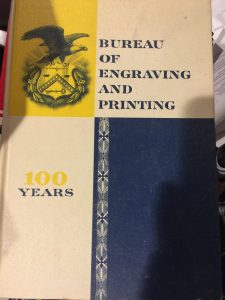
Bureau of Engraving and Printing, 100 Years
It is a beautifully produced book that stands out for its quality in both production and writing. The history of the BEP is well written with images of the process with images of some of the printing element interspersed throughout the text. Also included are intaglio printed images from the Bureau of Engraving and Printing archives. Between the pages with the intaglio prints is a tissue-like paper to help protect and preserve the images.
Although there are many good online histories of the Bureau of Engraving and Printing none of them are complete and does not include the other security printing history of the agency including bonds and stamps.
Three on Counterfeiting Currency
The most read post on the Coin Collectors Blog is “How easy is it to pass counterfeit currency.” I am fascinated that since I published that post there it has logged over 5,000 unique hits. I am sure that the post is being picked up by search engines and shown to people who are looking for illicit information. They are probably disappointed that the post is not an instruction manual, but I am fascinated that so many people would be interested.
It made me curious about the history of counterfeiting in the United States. Since I am on a book buying binge, it was time to find some interesting titles:
- Illegal Tender, Counterfeiting and the Secret Service in Nineteenth-Century America by David R. Johnson. To save money, this is a former library book in very good condition. I have skimmed this book and it looks like it will provide a good background as to the evolution of the U.S. Secret Service. The U.S. Secret Service is a unique agency. It was formed to investigate and deter counterfeiting of U.S. currency starting in 1865. They were so well respected that they were asked to protect President Theodore Roosevelt following the assassination of President William McKinley in 1901. Although many countries have divisions of their law enforcement services that investigate counterfeiting, the United States is the only country that has an agency whose mission to protect the currency from counterfeiting.

Banknote Reporters and Counterfeit Detectors from 1949
- Bank Note Reporters and Counterfeit Detectors, 1826-1866, by William H. Dillistin. Published by the American Numismatic Society in 1949, this book is a survey of experts in counterfeit detection that describes what to look for. It is also a catalog of publications in counterfeit detection and the authors. An interesting exercise may be to work on trying to find the papers and pamphlets listed in this book. I also liked the images in the back of the book that shows what to look for to detect counterfeits.
Illustrated History of Coins and Tokens Relating to Canada

Illustrated History of Coins and Tokens Relating to Canada by P.N. Breton
I have to admit to “picking” this book during a sale of books from my local coin club. The club is selling off items in its library that there seems to be little interest. Periodically, a few books are brought to a meeting and sold by silent auction. When Illustrated History of Coins and Tokens Relating to Canada, I did not pay attention. I was drawn that it was an older book about Canadian coins and that it is written in both French and English. What made this book stand out is that each page had two columns with the French text on the left and the English on the right. The format was fascinating I bid and won the book. Only after I started to go through my pile this past week to prioritize my reading list did I realize what I had purchased.
Although this is not a priority read, to have a contemporary reference about Breton Tokens written by P.N. Breton should make a fascinating read.
So… what’s on your bookshelf?
Dec 9, 2016 | history, news, obituary
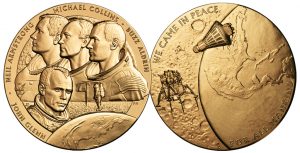
New Frontier Bronze Medal features the portraits of Apollo 11 astronauts Neil A. Armstrong, Michael Collins, and Edwin E. “Buzz” Aldrin Jr. facing left, and Friendship 7 astronaut John Herschel Glenn Jr. facing right. The reverse features the Apollo 11 LEM orbiting the moon and the Friendship 7 mission capsule orbiting Earth.
Heroism is climbing to the top of the Atlas LV-3B rocket, that was rushed to completion and whose tests did not exactly go as planned and launched into low Earth orbit trying to help the United States catch up in the space race. With the entire world watching and the next year after the Soviets made their own flight into orbit, John Herschel Glenn, Jr. rode Friendship 7 into history.

COL John Glenn
Glenn was so humble that he said that he was the just the next one up. But subsequent stories came out later that with the push to have an American fly in Earth’s orbit quickly, the schedule was manipulated so that Glenn was the pilot of that mission. Some have accused Glenn of using his relationship with President Kennedy for that honor, but that was later disproven.
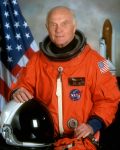
NASA Payload Specialist for STS-95
In between flights into space, Glenn became a corporate executive with Royal Crown Cola with an eye on politics. He started with an attempted run at the senate in 1964 but withdrew after a personal accident. He was with Robert F. Kennedy on the campaign trail when Kennedy was assassinated. In 1970 lost the Democratic primary for the senate against Howard Metzenbaum. Glenn finally won the 1974 Democratic primary and was elected Senator from Ohio, a seat he held until retiring in 1999.
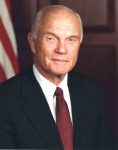
Official U.S. Senate portrait of John Glenn
From the day he dropped out of college to join the Army through the end, John Glenn has been nothing less than a hero. He spent most of this life in service to his country with impeccable honor and distinction. Glenn showed how good people can serve for the sake of service without having to get anything more out of the service than the satisfaction that he made life better.
We are better for having had John Herschel Glenn, Jr. amongst us.
Godspeed, John Glenn.

Still frame of John Glenn in orbit, taken by a motion picture camera inside Friendship 7
Credits
- Image of the New Frontier Bronze Medal courtesy of the U.S. Mint.
- All other images are from government sources and in the public domain.
Nov 8, 2016 | commentary, history
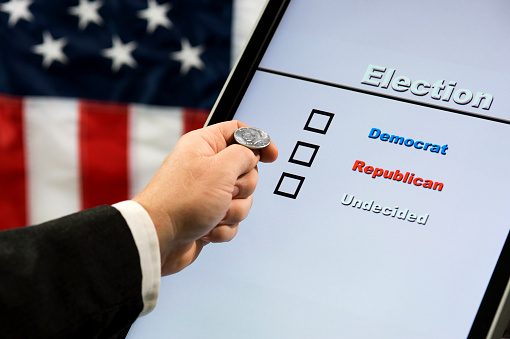 The election of 1800 was a rematch of the incumbent John Adams, the Federalist, and his Vice President and Democratic-Republican Party nominee, Thomas Jefferson. At the time, the president was elected with the most Electoral College votes and the Vice President was the candidate with the second most votes.
The election of 1800 was a rematch of the incumbent John Adams, the Federalist, and his Vice President and Democratic-Republican Party nominee, Thomas Jefferson. At the time, the president was elected with the most Electoral College votes and the Vice President was the candidate with the second most votes.
There were no rules on how the states selected electoral votes. Some states directly selected electors while others voted for the candidate whose party selected electors. It was 200 years before Florida would become an election issue but for this election, Georgia was the issue when its certificate of election was defective because it was not in the right format. But the President of the Senate, who was the election judge, counted the Georgia votes.
The race ended with Jefferson and Democratic-Republican Vice Presidential candidate Aaron Burr in a 73-73 tie. Since there was no clear winner, the fourth presidential election in the nation’s history set up an early test for the new constitution and was sent to the House of Representatives for resolution.
In 1801, when the House convened on February 11, the chamber was controlled by the Federalists. As the first partisan election, the Federalists were not happy with the choice causing some not to vote or vote against the candidate they liked the least. In 35 ballots over seven days, the vote was 8 states selecting Jefferson, 6 for Burr, and no result for Maryland and Vermont whose delegations tied.
During the votes, Alexander Hamilton, a Federalist, urged his fellow Federalists to support Jefferson. Hamilton thought Jefferson would be a better choice because “by far not so dangerous a man.” Hamilton was not as confident about Burr. Hamilton would later confirm his feeling on July 11, 1804.
After a letter writing campaign by Hamilton, the four delegates from Maryland that supported Burr shifted their vote to “no selection” as did the Burr supporters from Vermont, Delaware, and South Carolina. That would give Jefferson the vote from 10 states to become the third president of the United States.
If we learn nothing else from history, every vote counts. Go out and vote!
Image courtesy of iStock Photo.
Nov 3, 2016 | coins, fun, history, medals, news
Congratulations to the Chicago Cubs!
It only took 108 years!
Obligitory numismatic content:











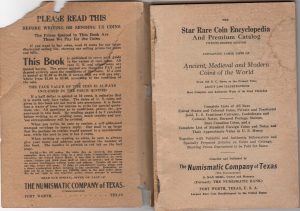
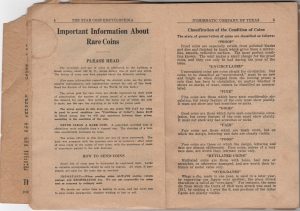
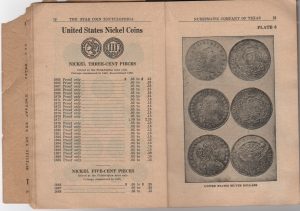
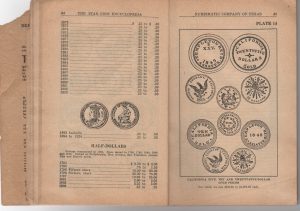

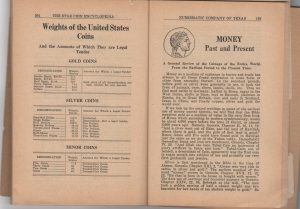

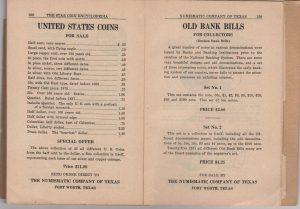
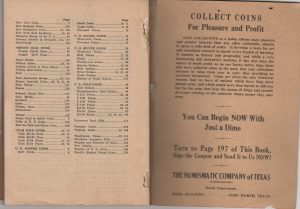
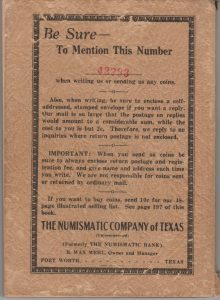


















 The election of 1800 was a rematch of the incumbent John Adams, the Federalist, and his Vice President and Democratic-Republican Party nominee, Thomas Jefferson. At the time, the president was elected with the most Electoral College votes and the Vice President was the candidate with the second most votes.
The election of 1800 was a rematch of the incumbent John Adams, the Federalist, and his Vice President and Democratic-Republican Party nominee, Thomas Jefferson. At the time, the president was elected with the most Electoral College votes and the Vice President was the candidate with the second most votes.